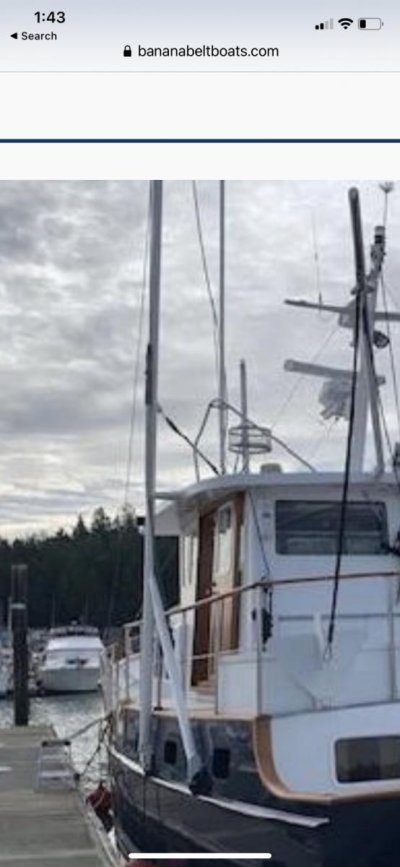Cold-smoked
Veteran Member
Very nice boat there, Simi ! What will the mast-system look like, and how does she roll - is she stiff or tender ?
Regarding the position of the paravanes or flopper stoppers. I'm just re-reading Bob Beebe's book "Voyaging under power". He insists that the paravane rig should be positioned at 28% from the stern preferably at a bulkhead to deal with the stresses.
Putting it further toward the bow inhibits steering response as the paravanes fight any course correction. He also mentions increased drag the further forward the vanes are positioned. The paravanes will also try to prevent the bow from rising into oncoming seas the further forward they are. Beebe has a whole chapter on paravanes.
ThanksVery nice boat there, Simi !
Because we have the height already the general consensus is a mast can be avoided and, it would seriously affect solar panel positioning and shading if we had one.What will the mast-system look like,
Carvel hull so she rolls.and how does she roll - is she stiff or tender ?
For your consideration, close enough to 50% mark and position of arm if done in the front location
I wonder why they put them so high?
If they ran them from the deck down the angles and loadings would be a lot better.

The backing plates in the pilothouse are the same size as the exterior pads and are aluminum 3/8" plating.
For the stern feet of the superstructure they are much larger, since these feet take the majority of the load.
All the bolts are tapped through the fiberglass, which has a minimum thickness of 1/2 inch then backed with the aluminum plates and bolts.
The back plate bolts are 1" bolts on the exterior and 1/2" bolts on the interior side. The forward feet in the pilothouse are all 1/2" bolts.
The back feet are positioned directly over the salon wall where it intersects with a 2nd wall. 1/2 the bolts are on the outside of the house, and 1/2 the bolts go to the inside of the salon. The inside bolts are hidden.
Here is a picture of the rear feet exterior backing / chain plate.
I hope this helps. It's not a very good picture with the sun this morning, plus it came out sideways! I think it's shown in better detail in the video.
Jim

Nice job! You did a great job on the tower. I hope you keep posting on your travels.
Nice video. Really drives home the size and cost of the superstructure required for paravanes. Seems like the costs of paravanes, fins and gyros are not all that far apart in the end.
Be careful launching those fish in rough weather. Always good to deploy them before you need them.

The mast on Hobo doesn't have a compression post. The mast is for looks and lifting a 800 lb dinghy. The A-frame takes and distributes the load. The A-frame design is pretty common in the PNW where ours were installed.
I’ve posted this before to show the loading. In big seas you can here the rigging singing as it loads and unloads going through the water.
